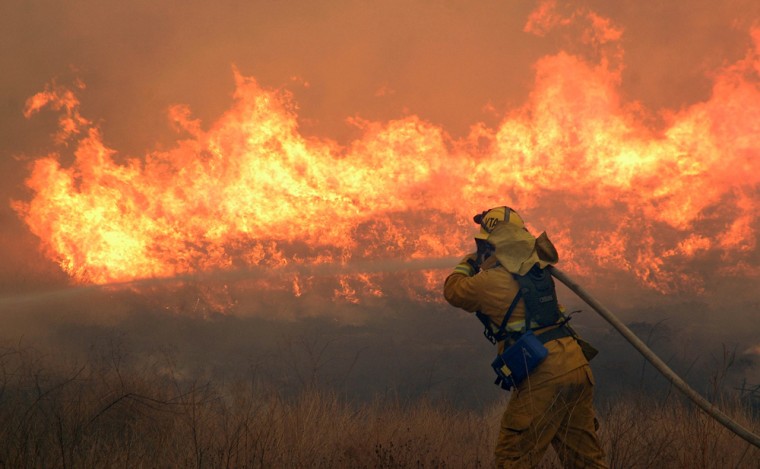The nation set a record for wildfires this year and climate experts say 2006 will probably end as the third warmest year on record for the contiguous United States.
Drought and hot conditions contributed to the record wildfire season, with more than 9.5 million acres burned through early December, according to the National Interagency Fire Center.
The annual climate report, released Thursday by the National Climatic Data Center, says 2006 will most likely be the third warmest year on record, trailing only 1998 and 1934.
For the world as a whole, 2006 is expect to end as the sixth warmest year on record, the agency said.
Meanwhile, in England, the weather service — known as the Met Office — and the University of East Anglia also issued a joint statement proclaiming 2006 as the sixth hottest year on record worldwide.
Notable weather in 2006, according to the U.S. climate center, included:
- The nation's residential energy demand was approximately 9 percent less during the relatively mild winter, and 13 percent higher during the hot summer.
- Summer included a heat wave that peaked during the last half of July. All-time records were set in a number of locations across the central and western United States.
- For the contiguous United States, five of the first seven months of the year were drier than average. Combined with unusually warm temperatures, drought conditions persisted in much of the country. By late July, half of the contiguous United States was in moderate to exceptional drought.
- Above average rainfall from August through November helped end drought in many areas, although in places such as western Washington, record rainfall in November led to extensive flooding.
- The 2006 hurricane season was near-normal. The nine named storms during the 2006 season is the second lowest since 1995. Only the 1997 season had fewer. This is attributed largely to the rapid onset of El Nino in the equatorial Pacific, which suppresses conditions conducive to hurricane formation in the Atlantic.
- Also related to El Nino, the Eastern Pacific hurricane season showed a sharp increase in activity compared to the below-normal levels seen since 1998. Through early December, 19 named storms had formed, with three making landfall along the Pacific coast of Mexico, including major Hurricane Lane.
- The extent of Arctic sea ice was second lowest on record in September, which is the time of year with sea ice coverage. This was only slightly higher than the record low extent measured in 2005.
